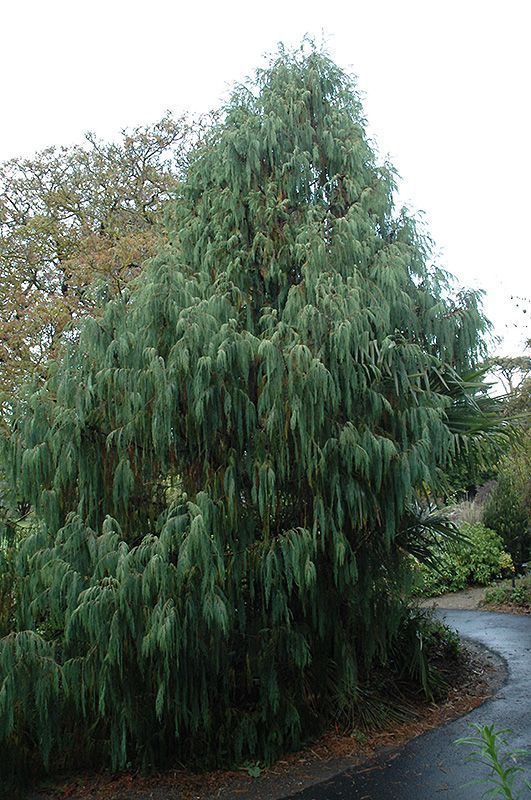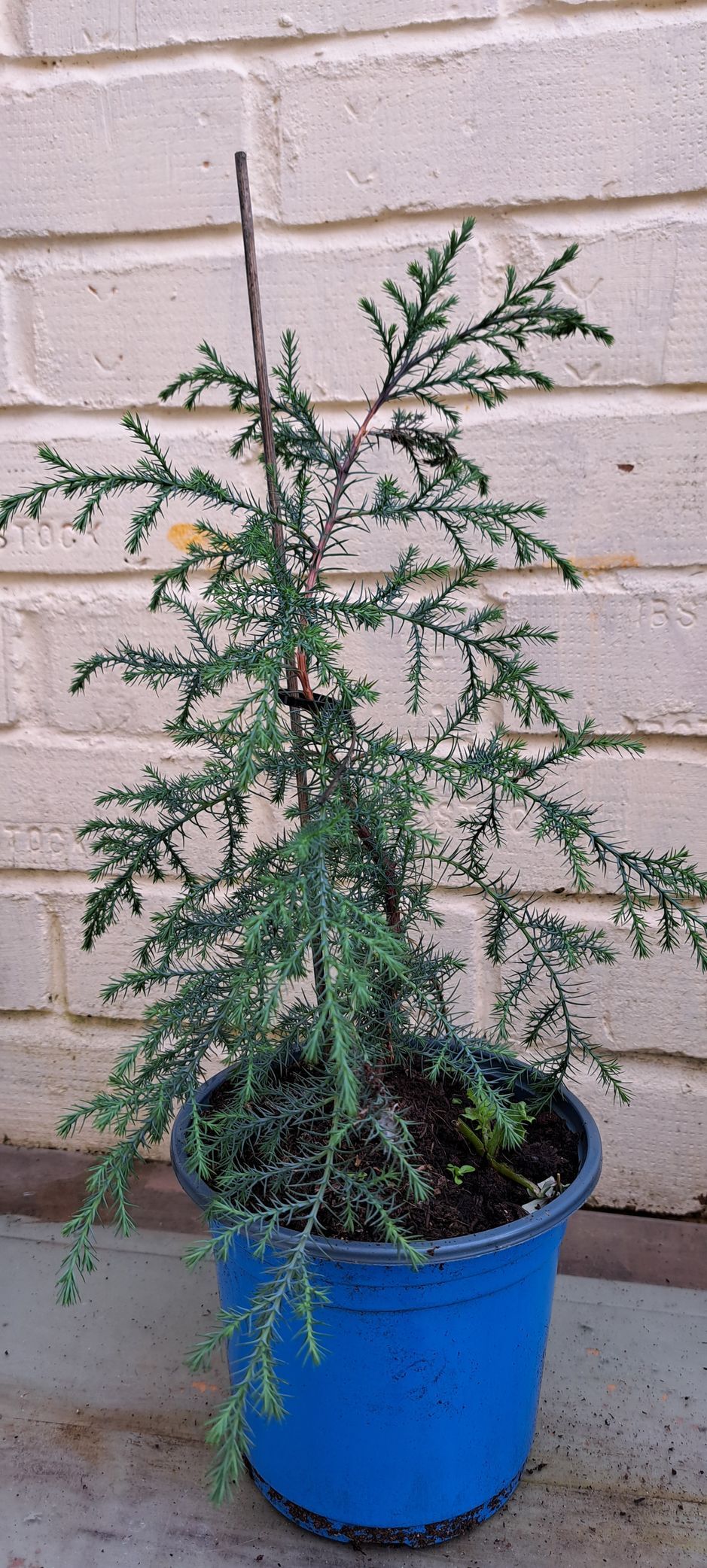

Darjeeling weeping cypress (Bhutan Cypress)
The Darjeeling weeping cypress is a medium to large evergreen conifer native to Northeast India, Bhutan, China, and Nepal. The leaves form in dense hanging sprays (scale-like), 5 mm long with a rich dark bluish green colour. The Darjeeling, Kashmir or Himalayan Weeping Cypresses are very similar.
How to correctly plant cypress trees
- Plant cypresses between September and May
- Only plant out young cypress plants from a height of 1m, as they are then much less sensitive to frost
- Dig a large hole
- Backfill lower layer with loose excavated material and, if necessary, add some sand or gravel to improve drainage
- Take the root ball out of the pot and loosen up a little with the hands
- Place root ball in the hole and cover with excavated soil
- Lightly press down the soil and water well
- Add a layer of bark mulch around the plant to prevent the soil from drying out so quickly
Planting cypress trees in pots
Keeping cypress plants in a pot is a good alternative in regions that are too cold to plant them outside. This allows you to move the cypress plant to a suitably warm place for the winter. Plant cypress trees in pots following the same principles as planting in the ground. Just create a drainage layer of gravel at the bottom of the pot. Also make sure to choose a large enough pot, as columnar cypresses can quickly begin to lean over. Large pots also hold more soil, so can store more water, so you will not need to water as frequently.
Caring for cypress trees
Cypresses are relatively low-maintenance plants which, with the right care, reward us with year-round green foliage. As long as the location is right, they will only need the occasional watering and protection from the cold in winter, if necessary. Aside from this, the main care measure cypresses need is annual pruning. That said, potted cypress plants need a little more attention than those planted outdoors.
Pruning cypress trees
Cypresses are known for their vigorous growth. Pruning cypress promotes compact growth and thus keeps them from becoming sparse or falling victim to snow breakage. Depending on the species, you can even trim these versatile plants into a hedge or clip them into ornamental shapes. A mild day in October is the perfect time to prune.
Keeping cypress plants in a pot is a good alternative in regions that are too cold to plant them outside. This allows you to move the cypress plant to a suitably warm place for the winter. Plant cypress trees in pots following the same principles as planting in the ground. Just create a drainage layer of gravel at the bottom of the pot. Also make sure to choose a large enough pot, as columnar cypresses can quickly begin to lean over. Large pots also hold more soil, so can store more water, so you will not need to water as frequently.
Caring for cypress trees
Cypresses are relatively low-maintenance plants which, with the right care, reward us with year-round green foliage. As long as the location is right, they will only need the occasional watering and protection from the cold in winter, if necessary. Aside from this, the main care measure cypresses need is annual pruning. That said, potted cypress plants need a little more attention than those planted outdoors.
Watering cypress trees
Outdoors, cypresses usually get enough water, but we recommend watering from time to time in dry summers and even winters. Do not let cypress trees dry out in their winter quarters. Ensure the soil remains slightly moist, but not wet.
Pruning cypress trees
All about the Bhutan Cypress
Cupressus cashmeriana, commonly known as Bhutan Cypress or Kashmir Cypress, a stunning tree native to the eastern Himalayas of Bhutan and northeastern India. With its picturesque, weeping branches and elegant blue-gray foliage, this coniferous giant grows at elevations ranging from 4,100 to 9,100 ft, creating breathtaking views in gardens and parks worldwide. As Bhutan's national tree, Bhutan Cypress stands as a symbol of spirituality, often found near Buddhist temples, revered for its serene presence and cultural significance.
Rising to heights of 40-60 ft (some getting up to 100+ ft) with trunks up to 9 ft in diameter, this cypress is a marvel of natural architecture. Its pendulous branches hold scale-like leaves, and its dark green seed cones, maturing to a rich brown, add visual interest year-round. Popular in horticulture for its ornamental value, Cupressus cashmeriana's form and color, enhances landscapes with their unique aesthetic. Recognized with the Royal Horticultural Society's Award of Garden Merit, it is a treasured addition to any temperate garden setting.
